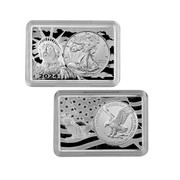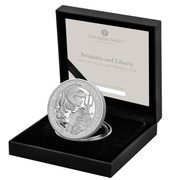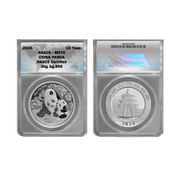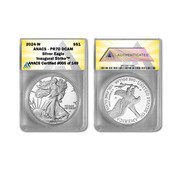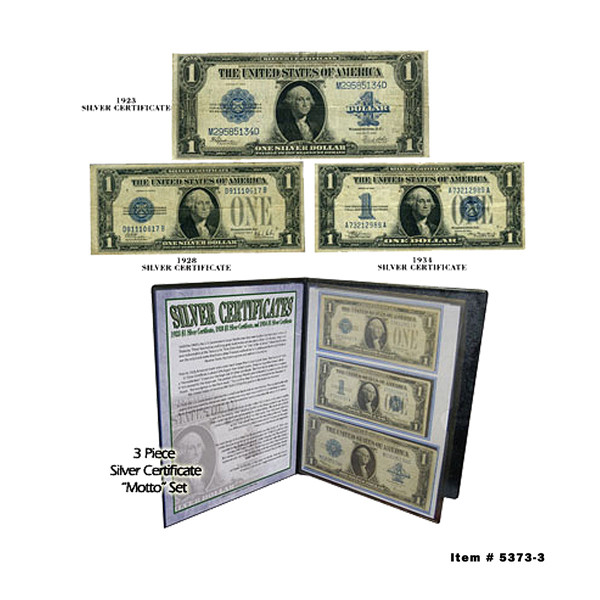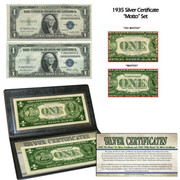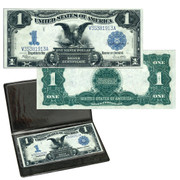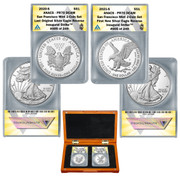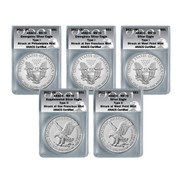 Loading... Please wait...
Loading... Please wait...- Home
- Paper Currency
- Silver Certificate Type Set
Product Description
Until 1928, America’s bank notes were much larger than today’s bank notes. The last of the large-size $1 bills was made in the Series of 1923. It looks similar to a modern $1 bill, except for the large size. The first of the small-size bank notes was introduced in the Series of 1928.
This collection features the Series of 1923 $1 Silver Certificate that was America’s last large-size bank note plus the Series of 1928 $1 Silver Certificate that was America’s first small-size bank note, as well as the short-lived Series of 1934 $1 Silver Certificate that was the second small-size Silver Certificate.
Silver Certificates are the only bank notes that have a blue Treasury seal and serial numbers. (Today’s Federal Reserve Notes have a green Treasury seal and serial numbers.)
The Series of 1923 $1 Silver Certificate is about 50% bigger than today’s notes – and was so large that it was called a “Horseblanket.” What’s more, it was backed by silver that was stored at the U.S. Treasury. The silver was actually exchangeable for “One Silver Dollar” at the U.S. Treasury. In 1923, you could have taken this Silver Certificate to the Treasury and redeemed it for a Morgan or Peace Silver Dollar. Because of this, Silver Certificates were trusted by the American public. They were just as valuable as the actual Silver Dollars, unlike today’s Federal Reserve bank notes which are backed only by the faith of the Government and not by precious metal.
The inscription reads, “This certifies that there is on deposit in the Treasury of the United States of America ONE SILVER DOLLAR payable to the bearer on demand.”
In 1928, the U.S. Government switched to a small-size bank note to save money. The special bank-note paper that is used for America’s paper money is very expensive and time-consuming to make. By cutting the bank note to its present size, the Government saved a considerable amount of money.
The 1928 $1 Silver Certificate looks similar to the 1923 note, but it is much smaller. It was also backed by “ONE SILVER DOLLAR” in the Treasury, but it was the last Silver Certificate that was redeemable for a Silver Dollar.
The back of the 1928 note is different from the back of the 1923 note. The 1928 note is known as the “Funnyback” because the new design looked “funny” (i.e. different from the 1923 note) and at first people thought it was a counterfeit or a foreign note.
The next series was issued in 1934. It was redeemable for “ONE DOLLAR in silver payable to the bearer on demand.” It also features the “Funnyback” design, and it was the last $1 Silver Certificate with this design. In 1935 the back was changed to the familiar design depicting the Great Seal of the United States. The Series of 1934 $1 Silver Certificate was very short-lived and is one of the scarcest $1 Silver Certificate types.
Finding a set of 1923, 1928, and 1934 $1 Silver Certificates gets tougher every year. Most were worn out in circulation or destroyed by the Government generations ago when the $1 Silver Certificates were withdrawn from circulation in the 1960’s. Just a fraction of the original bank notes remain for today’s collectors. A bank note, on average, lasts only a few months in circulation before it must be withdrawn and destroyed. Amazingly, all three $1 Silver Certificates in this collection are in Very Fine or better condition. They are presented in a display folder with a Certificate of Authenticity.

